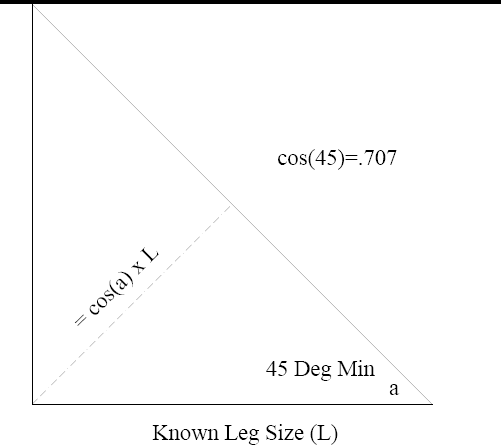I am no math whiz so my explanation may be crude. (9th grade last math class).
On a right triangle the hypotenuse forms a 45 degree angle. If you split the center of the face (hypotenuse) and go from there to the root you have another right triangle. If you then take the leg size and multily it times the COSINE of the Angle which for a 45 degree angle is .707 and multiply that times the leg, you get the throat thickness.
This only works for joints that are at 90 degrees and have flat or convex faces. Here are some facts (unless I am wrong which is possible)
1) an equal leg fillet weld in a 90 degree joint the width of the face is 2 times that of the throat. So if you can only measure the face AND the leg sizes are equal you can approximate the throat.
2) If you can only measure the smallest leg, the throat will be .707 times that dimension.
3) You can only use a throat gage on a flat or concave weld. If a throat dimension is called for and the weld is convex, you must calculate the throat.


